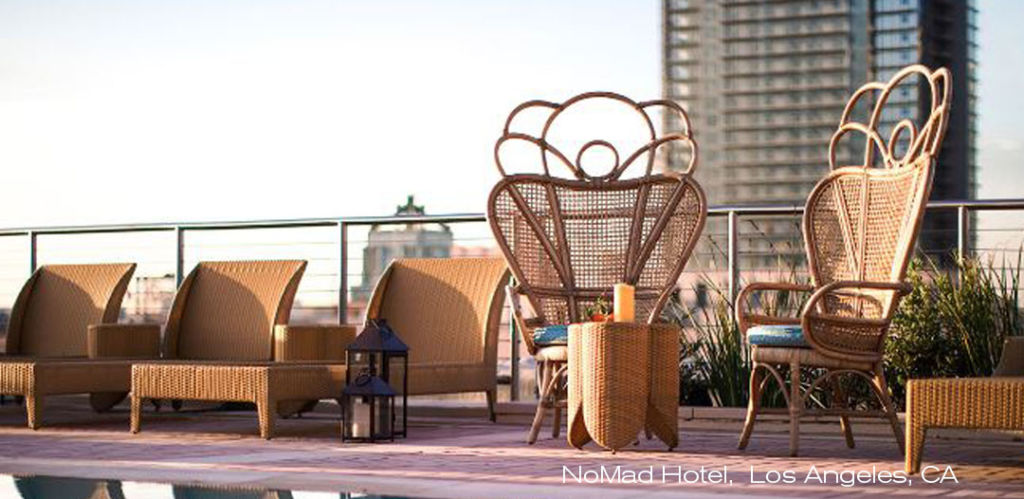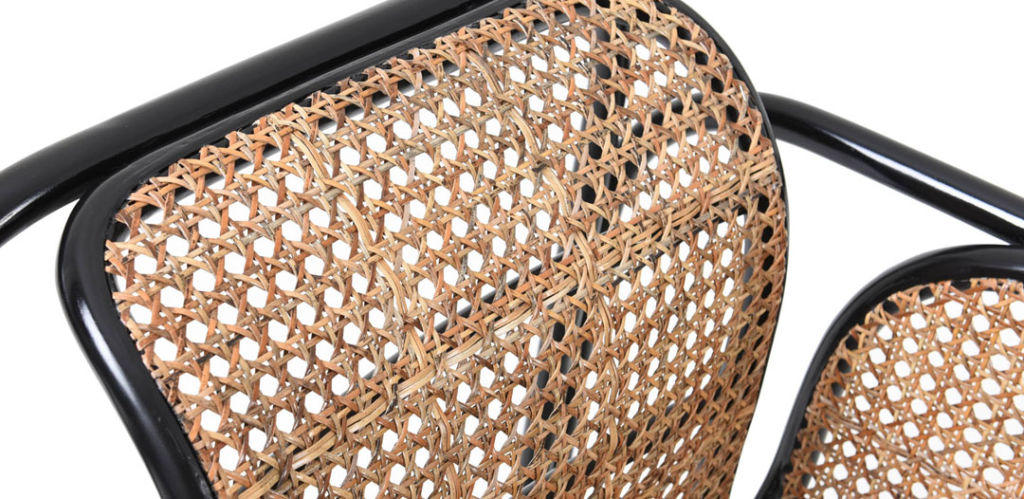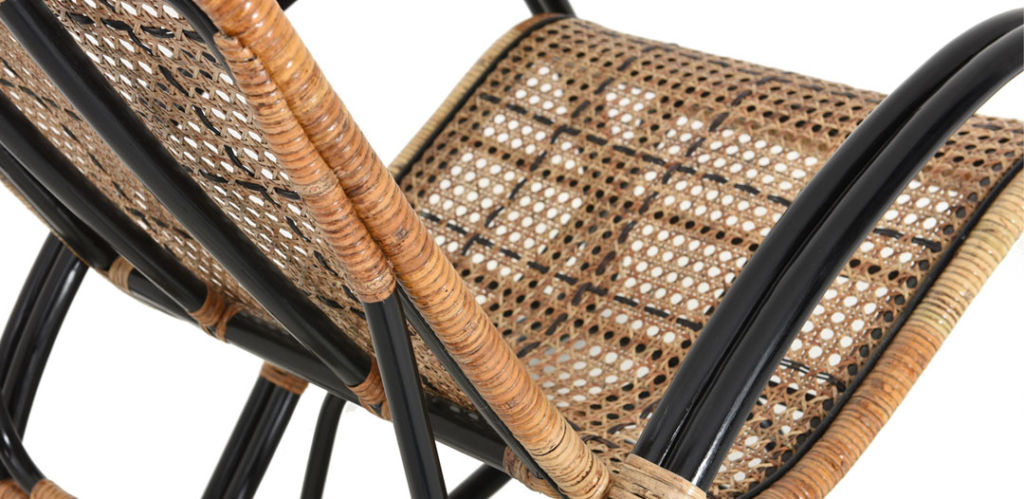Rattan made the scene in the US early in the 20th century, most famously as the peacock chair – a large woven chair with a semi-circular back designed to resemble a peacock’s spread tail. The bohemian glamour of the chair caught the eye of the beautiful Hollywood set and later became a pop culture symbol in the 1970’s, popularized by a poster of Huey Newton, renowned leader of the Black Panthers. Later that decade, Rattan played a significant role in the tropical design trend seen in both indoor and outdoor furniture. Since wicker and rattan are experiencing a resurgence, let’s take the time to educate ourselves and fully appreciate the craftsmanship involved in making good quality rattan furniture.

What are Wicker and Rattan? First, let’s clarify: wicker is not a material, but rather a general term referring to the method of weaving together fibers for furniture and decorative items. It is a broadly used term for all items woven from synthetic or natural fibers such as rattan, bamboo, seagrass and more. While wicker furniture can be composed of all these materials, rattan furniture is only made from rattan poles and other rattan materials.

Rattan – actually a liana vine, not a tree – is one of the hardest woods in the world and can easily be bent and woven into various shapes. Found mainly in SE Asia, some species grow more than 300 feet in length, thus making rattan an abundant and sustainable resource. At first glance, rattan appears similar to bamboo; however, the rattan poles are solid, not hollow as is bamboo. In addition, rattan poles are smoother and more regular in size than bamboo.
The production of rattan furniture often utilizes material from the entire plant: peel, core and pole. Rattan poles, i.e. the stem, are very strong and generally used to form the frame of furniture. They are quality rated according to the thickness of the pole and the smoothness of the exterior. Although their natural hue is beautiful without decoration, rattan poles are easily painted.
Cane is the outer skin of the rattan that has been peeled away from the stem and cut into thin strips. Cane is produced in many different sizes used for weaving seats and chair frames along with other decorative accessories. Cane has a beautiful naturally glossy finish and can be easily dyed to several colors for a custom look. Less porous than other natural materials, cane repels spills if wrapped tightly around the frame of the furniture.
Reed is the thin flexible material found inside the rattan core. Most often used for basket weaving, it may also appear as an ornamental element in wicker furniture. Unlike cane, it has no natural finish and is quite porous and thus readily accepts paint or stain.

Rattan Furniture Production
Poles and canes are chosen and categorized by their size and texture, upon which quality is based. They are then straightened, measured and cut into designated size components. The solid rattan poles are then steamed and bent into shape using a jig or mold. To prepare for assembly, the poles are drilled where necessary for screws and grooved for the rattan webbing. To strengthen the furniture’s joints, select ends of the poles are cut into a half moon shape with a coping saw. Re-enforced cross bracing is also built into all our designs.
Weaving components by hand may take up to four days, depending on the type and complexity of the piece. The tighter and more detailed the weave, the more time needed. Once the frame and components are assembled with screws and nails and then sanded and scraped, it is time for binding. Rattan strips are then attached and woven over the frame in the desired open or closed weave design.

The final production phase, finishing, involves a minimum of 7 steps:
- Deburring-rattan ends are burned off for a smooth feel
- Sanding
- Applying first color coat
- Sanding
- Applying second color coat
- Sanding
- Lacquering
The final result of all this labor is a sustainably harvested, strong, beautiful piece of rattan furniture you can pass down to future generations. Heirloom quality pieces can last decades and match many different decors. Upon further reflection, the warmth of wicker may just be what we need right now to counteract all that is fast, shiny and tech driven in our world.